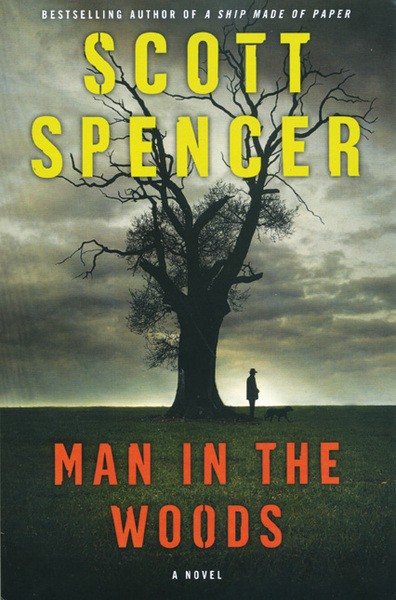Man in the Woods
Scott Spencer
Ecco, 2010, $24.99
There is much to praise in Scott Spencer’s tenth novel, Man in the Woods. The Rhinebeck-based best-selling author and National Book Award nominee is known for stories that dissect the exigencies of love, life, and personal responsibility. This book is no exception.
Man in the Woods burrows beneath the skin of Paul Phillips, a carpenter who accidentally kills a drifter and adopts the man’s dog as penance. Phillips’s random crime challenges his view of a just world and, most unsettlingly, his view of himself. The resultant trauma cramps his every breath, his every step, and soon affects his loved ones.
Spencer’s tale offers deftly etched emotional quandaries and a sharp eye for the rituals—and reassuring falsehoods—of American life. But Man in the Woods can be as ham-fisted as revelatory; for every 10 pages that enlighten, there is one that rankles.
Longtime fans will encounter familiar territory; Man takes place in Leyden, a fictional upstate New York town where previous novels have unfurled. Two central characters—writer Kate Ellis and her child Ruby—appeared in Spencer’s 2003 A Ship Made of Paper. Spencer’s gift for dense and thoughtful characterizations remains undimmed: Paul, Kate and a constellation of family, friends, and neighbors are engaging in their jumble of dreams, fears and contradictions—even if Spencer insists on lending each a self-awareness that is usually noted by the omniscient narrator.
Above all, Man in the Woods is a morality tale of faith in crisis. Paul’s religion is nature: the wood he carves, the forest animals he observes. Kate’s Christianity is a respite from alcoholism. By novel’s end, both watch their totems topple. (Setting the novel during the Y2K furor in 1999, seemingly to gin up the apocalyptic vibe, is a serious miscalculation, given the benign outcome of that situation.)
Spencer fleshes out the tale with keen observations on woodworking, best-seller fame and the cultish fans it brings, police investigatory techniques, the fears that underlie midlife romance, and even small-town gentrification. A friend of Paul laments, “I mean, come on, we walk in the woods and we hear the sound of bulldozers and then hedge-fund fuckers come jogging by.”
Rich descriptions fill the book. Lottery tickets are “pitiful little prayers,” a Christmas tree is “weeping tinsel,” and an old barn is “slowly collapsing in a long, splintery sigh of defeat.” But the veteran author is also capable of these sentences: “Yet what Paul is thinking is: Every step I take I go deeper into the darkness.” (The reader may lose count of how often “darkness” is used to describe Paul’s conundrum.)
If you adore Spencer’s prose, Man in the Woods is a bonanza at 300-plus pages. But overwriting abounds; the author cobbles lengthy histories for every person that frets his time upon the stage, including tertiary characters. For example, at Ruby’s school recital Paul sits next to a couple, and we must slog through four paragraphs of backstory although we never see them again. Ultimately, Spencer’s narrative touch is heavy-handed: Implausible plot twists lurch into view. For instance, to connect killer with victim, Spencer makes sure “Paul exits the highway on a sudden impulse,” then adds disingenuously, “He is not entirely sure why he is here.” In another scene, Paul’s sister Annabelle voices a recurring fear of being hit by a car. Guess what eventually happens?
While such missteps annoy, they can not diminish the aggregate emotional tug of Man in the Woods.
Book launch party Saturday 10/9 at 7:30pm at Oblong Books & Music in Rhinebeck.

















